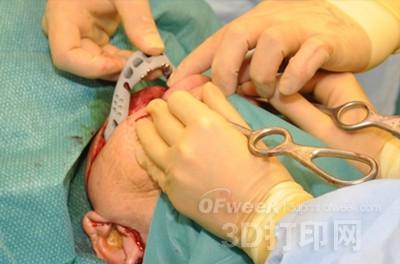Review the research progress of 3D printing technology in the preparation of medical polymer materials
3D printing technology can quickly and accurately prepare personalized biomedical polymer materials suitable for different patients according to different patient needs, and can accurately control the microstructure of materials at the same time. Therefore, this emerging medical polymer material preparation technology has unique advantages in future biomedical applications, especially tissue engineering applications. In recent years, research and development on the preparation of biomedical polymer materials by 3D printing technology has received more and more attention. Small series, 2016 3D printing is rapid development in medical biological year, different biocompatible polymer material is applied to 3D printing, 3D molded polymer materials which are used in vitro cell culture, or animal The soft tissue or hard tissue repair of the model. Next, we mainly look at the research progress of 3D printing technology in the preparation of biomedical polymer materials in recent years, and prospects for future applications and challenges in this field.
At home and abroad, there has been great progress in the application of 3D printing in biomedical research. Many reports have been reported before this site, such as the domestic Blu-ray Inno and the research institutions of Harvard University abroad.

It is understood that the basic manufacturing process of 3D printing technology is based on the principle of “layered manufacturing, layer-by-layer stackingâ€. For example, according to CT and other imaging data, after computer 3D modeling and conversion, the STL format file is input into the computer system, and layered into two-dimensional slice data, and layer-by-layer printing is performed by a computer-controlled 3D printing system. After that, I finally got a 3D product. At present, 3D printing technologies that are widely used mainly include photocuring stereoscopic printing (SLA), fused deposition molding (FDM), selective laser sintering (SLS), and three-dimensional printing (3DP).
![[Deep] Research progress in the preparation of biomedical polymer materials by 3D printing technology ã€æ·±åº¦ã€‘3D打å°æŠ€æœ¯åˆ¶å¤‡ç”Ÿç‰©åŒ»ç”¨é«˜åˆ†åææ–™çš„ç ”ç©¶è¿›å±•](http://i.bosscdn.com/blog/14/87/03/6538203048832.jpg)
The field of application of 3D printing technology is also expanding with the advancement of technology, including daily necessities, mechanical equipment, biomedical materials, and even living organs. In the field of biomedicine, 3D printing technology has been applied internationally in the manufacture of organ models and surgical analysis planning, the manufacture of personalized tissue engineering scaffold materials and prosthetic implants, and cell or tissue printing. For example, in surgical diseases such as orthopedics, oral and maxillofacial surgery, it is usually necessary to implant a prosthesis instead of damaged or excised tissue to restore the corresponding function and appearance. However, the alternative materials currently used in clinical practice are manufactured according to a fixed pattern. It is difficult to perfectly match the defect part of the patient, and it is not possible to obtain a very satisfactory result. With 3D printing technology, it is possible to quickly manufacture personalized tissue engineering scaffold materials based on imaging data such as CT and magnetic resonance imaging (MRI) of different patients, and even carry cells to perform in situ cell printing on tissue defect sites. It can achieve perfect matching between the material and the patient's lesions, and can regulate the structure of the material and the arrangement of the cells in the microstructure, which is more conducive to promoting the growth and differentiation of the cells and obtaining the ideal tissue repair effect.

Therefore, in recent years, 3D printing technology has been increasingly applied to the preparation of biomedical materials. In addition, biocompatible and biodegradable polymers have unique advantages in biomedical applications, especially in tissue engineering applications. Therefore, the application of 3D printing technology in the preparation of biomedical polymer materials has made significant progress in recent years. . This review highlights recent advances in the use of different 3D printing techniques in the preparation of biomedical polymeric materials, including biodegradable tissue engineering scaffolds, hydrogels, and cell-borne bioprinting systems.
![[Deep] Research progress in the preparation of biomedical polymer materials by 3D printing technology ã€æ·±åº¦ã€‘3D打å°æŠ€æœ¯åˆ¶å¤‡ç”Ÿç‰©åŒ»ç”¨é«˜åˆ†åææ–™çš„ç ”ç©¶è¿›å±•](http://i.bosscdn.com/blog/14/87/03/6537049046384.png)
Light curing stereo printing
1 Biodegradable tissue engineering scaffold
The raw material used in the photo-curing three-dimensional printing technology (SLA) is a liquid photosensitive resin, and other materials may be added thereto to form a composite material. It uses a computer-controlled ultraviolet laser beam to scan the layered sections of the computer model in a point-by-point manner, so that the thin layer of resin in the scanned region is photopolymerized or photocrosslinked and cured. Move the table in the vertical direction to cover the surface of the previously cured resin with a new layer of liquid resin, scan and solidify layer by layer, and finally obtain a three-dimensional prototype. SLA technology has the advantages of high precision, stable performance, high mechanical strength of the product, etc. The disadvantage is that the molded product needs to be cleaned to remove impurities, which may cause deformation of the product.
![[Deep] Research progress in the preparation of biomedical polymer materials by 3D printing technology ã€æ·±åº¦ã€‘3D打å°æŠ€æœ¯åˆ¶å¤‡ç”Ÿç‰©åŒ»ç”¨é«˜åˆ†åææ–™çš„ç ”ç©¶è¿›å±•](http://i.bosscdn.com/blog/14/87/03/6538843009868.jpg)
Royal Jelly is also called Bee Milk. The fresh royal jelly is slightly ropy milk paste substance; it is the excretive mixture of nutrition gland and maxilla gland of the head of little worker bee. The worker bees use this to feed the 1-3 days` worker bee larva and drone larva, 1-5.5 days` queen bee larva and queen bee in the oviposition period. The royal jelly is the biologic product containing very complicated active elements which contains almost all the nutrition elements required by the growth of the human body.
Royal Jelly,Natural Royal Jelly,Healthy Royal Jelly,Organic Fresh Royal Jelly
Easy Food (Jiaxing) Co., Ltd. , https://www.jxeasyfood.com